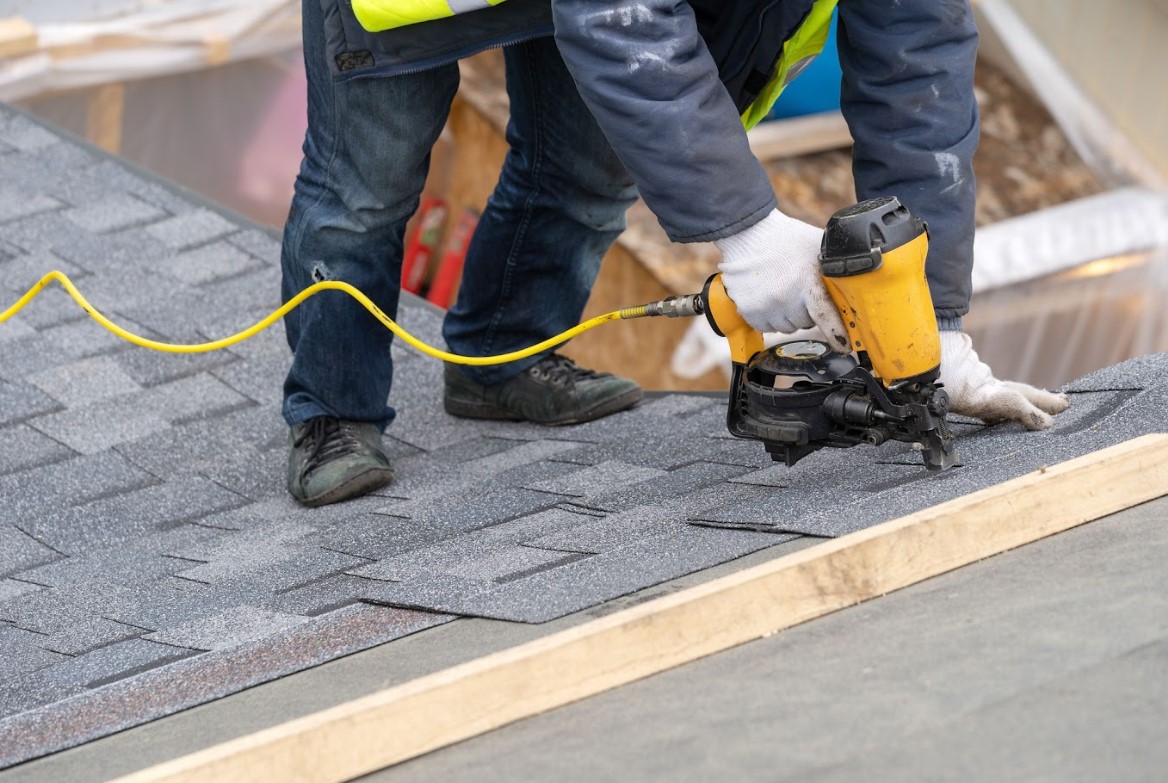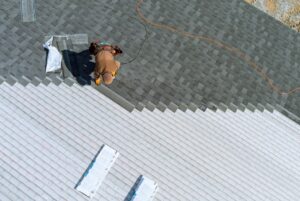When most people think about roof quality, they picture the shingles themselves. But one of the most important factors in a roof’s performance and durability comes down to something far less visible: nail placement.
Precise nailing is the difference between a roofing system that stands up to decades of weather and one that fails after the first major storm. Let’s take a closer look at how something as simple as nail position can influence the strength, longevity, and effectiveness of your asphalt roof.
Nail Placement Is More Than Just Holding Shingles Down
Every asphalt shingle is designed with a specific nailing zone. This zone helps hold the shingle in place while also reinforcing the shingle below it. Proper placement means a tighter seal, stronger wind resistance, and consistent performance across the entire roof.
Nails are responsible for:
- Securing shingles to the roof deck
- Preventing wind uplift
- Reducing the risk of leaks
- Supporting the overlapping structure of each shingle row
Incorrect nail placement weakens all of these functions. Even small misalignments can have big consequences.
What Can Go Wrong When Nails Are Misplaced
Our team has repaired thousands of roofs where nailing errors caused major issues. These are the most common problems that result from improper nail placement:
Overdriven Nails
When nails are driven in with too much pressure, they can break through the shingle mat. This leaves the shingle unsecured and vulnerable to wind damage. Overdriven nails are also more likely to rust and fail over time.
Underdriven Nails
If nails don’t sit flush with the shingle surface, they prevent proper sealing. Raised nail heads create gaps where wind-driven rain can enter, especially during heavy storms.
High Nailing
Placing nails too high on the shingle misses the reinforced area designed to hold the shingle down. This reduces holding power and can void manufacturer warranties. High-nailed shingles often come loose sooner than expected.
Angled or Crooked Nails
When nails are driven at an angle, they cut into the shingle material or fail to catch the roof deck correctly. This weakens the overall structure and can cause the shingle to lift or tear under pressure.
Skipped Nails
Each shingle requires a specific number of nails to function properly—usually four to six depending on wind conditions. Using fewer than required leads to uneven stress and a higher chance of failure.
Long-Term Effects of Improper Nailing
Incorrect nail placement doesn’t just affect individual shingles. It compromises the integrity of the entire roofing system.
Some long-term issues caused by poor nailing include:
- Shingle blow-offs
- Water infiltration and leaks
- Rotting underlayment or roof decking
- Voided manufacturer warranties
- Higher maintenance and repair costs
These issues don’t always appear right away. In fact, many homeowners don’t discover them until several months or even years later—usually after a major storm or an inspection reveals underlying damage.
How Best Choice Roofing Gets It Right
Best Choice Roofing has developed a nationwide training and quality control process to prevent these problems before they start. Our crews follow detailed specifications based on the best practices in the industry.
We:
- Use the correct nail type and count based on manufacturer requirements
- Train installers to hit the exact nailing zone on every shingle
- Adjust nail gun pressure to match the decking material and weather conditions
- Inspect each row during installation to verify accuracy
- Reinforce high-wind areas with additional fasteners where needed
Because every project is managed to these same standards, our customers receive consistent quality no matter where they live. We don’t take shortcuts, and we don’t let details slide.
Why Homeowners Should Care About Nail Placement
Most homeowners won’t see the nails during or after roof installation, but their placement makes a direct impact on the performance and lifespan of the roof. If nails aren’t placed properly, shingles may shift, crack, or detach well before the end of their expected service life.
As a homeowner, it’s important to:
- Ask your contractor about their nailing practices
- Request information about installation quality control
- Choose a company that follows manufacturer specifications
- Schedule periodic inspections to catch early signs of failure
Even the most durable shingles can fail early if the installation wasn’t done right.
How to Spot Nail-Related Problems
While nail placement issues often go unnoticed until a problem arises, there are some warning signs to watch for:
- Curling or lifting shingles
- Water stains on ceilings or attic rafters
- Missing shingles after wind events
- Uneven shingle rows or bumps in the roof surface
- Increased energy bills due to ventilation issues caused by loose shingles
If any of these signs appear, it’s time to schedule a roof inspection. Catching a small issue early can prevent the need for a full roof replacement down the line.
Best Choice Roofing believes long-lasting roofs start with precise workmanship. That means focusing on details like nail placement, which many companies overlook. Contact your local Best Choice Roofing team today to schedule a free roof assessment and see the difference experience and precision make. Every nail counts, and we make each one count for more.





